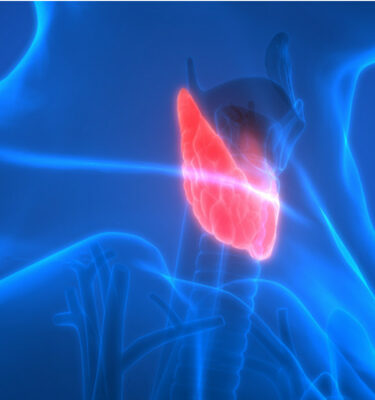The liver plays an important role in the production and processing of hormones. It is able to activate and deactivate hormones such as the thyroid hormone fT4 (conversion) and insulin (glutathione conjugation).
Oestrogen is metabolised in the liver in several ways, depending on an indivudual’s genetic disposition, particularly a variation , called single nucleotide polymorphism (SNP) in the gene CYP1B1. The breakdown products for each variation have a unique oestrogenic activity that strongly differs from each other. The stronger the oestrogenic effect, the greater the risk of developing an oestrogen-related tumour.
Read more about organ function
The pathway in which hormones are broken down depends on the availability of a large number of nutrients, including enzymes and amino acids. Phase I of the detoxification is the most important pathway for estrogens. The ovaries produce estrogen, primarily estradiol, which is converted in estrone, eventually estriol.
The liver metabolizes the remaining estradiol and converted estrone, breaking it down further, and excretes the excess in the bile. Some researchers and medical specialists now believe that the liver’s ability to metabolize estrone is the key to understanding estrogen-related cancer risk.
During Phase I metabolism, estrone is converted into various metabolites including hydroxyestrone, a very weak estrogen, and 16 alpha-hydroxyestrogen, a very powerful estrogen. If the conversion process favors the ‘strong form’, the tissue that has an abundance of estrogen-receptors, such as breast and uterus, may be more vulnerable to excessive estrogen activity. This will lead to the formation of fibroids or the stimulation of estrogen-sensitive tumors. Phase I processing can be effected by many factors, including extreme overload by the effects of alcohol- or drug abuse, a lack of nutrients, or interference from compounds like medication. For example, the juice of grapes and grapefruit can slow down the enzymes in Phase I, potentially altering the hormone balance.
Many prescribed drugs are metabolized in Phase I, which can interfere with the liver’s ability to process estrogen hormone, and therefore influencing estrogen-levels. However, indole-3-carbinol (IC3), a phytonutrient derived from cruciferous plants, stimulate enzymes that promote the metabolism of estrogen in the milder forms. IC3, present in vegetables like broccoli, cauliflower, cabbage and Brussels sprouts, therefore reduce the risk of estrogen-dependant-cancer.. Almost for every hormone, specific food is known that influence the hormone’s balance. For the thyroid hormone fT4, millet can interfere strongly by reducing the conversion of fT4 to fT3, therefore decreasing thyroid function.
-
Adrenal profile (saliva test)
€ 147,45 -
17-Ketosteroid profile 24 hour urine
€ 262,50 -
Thyroid hormone 24-hr. urine
€ 85,95



